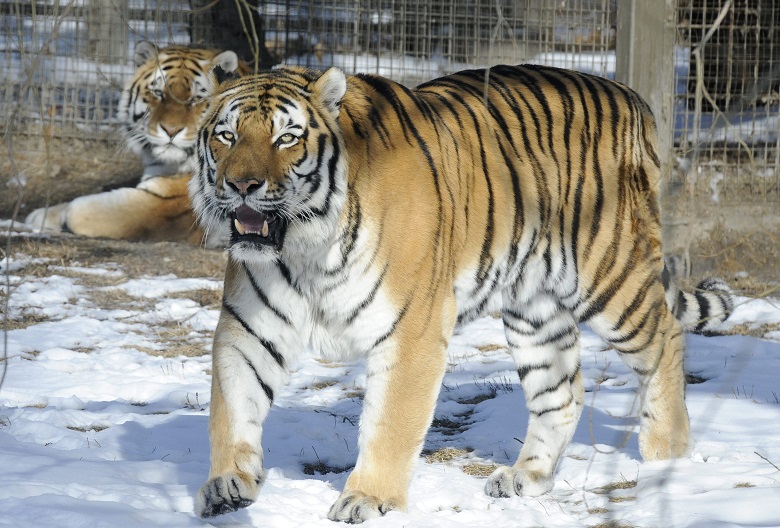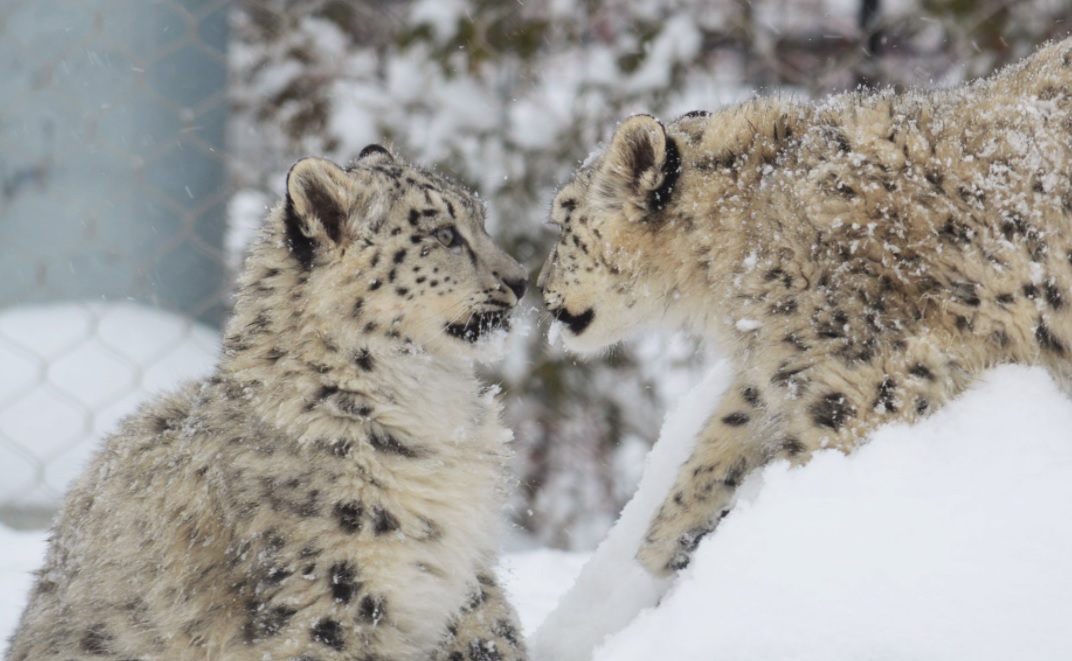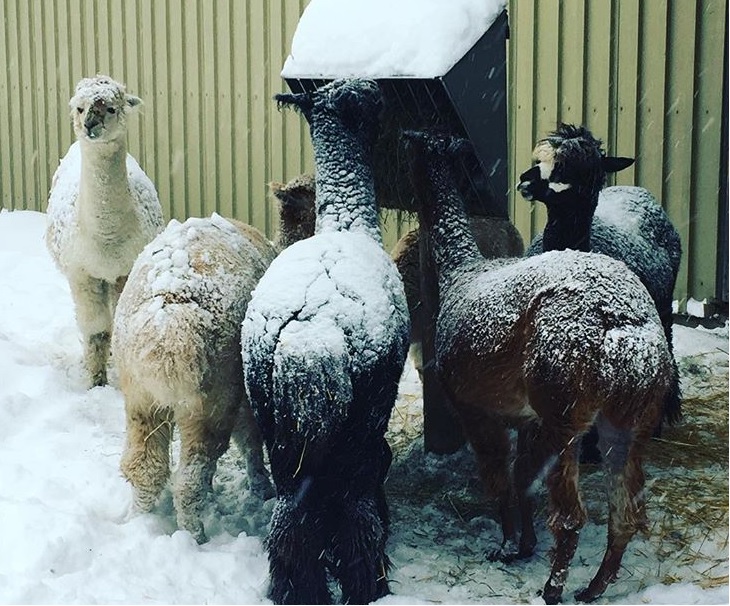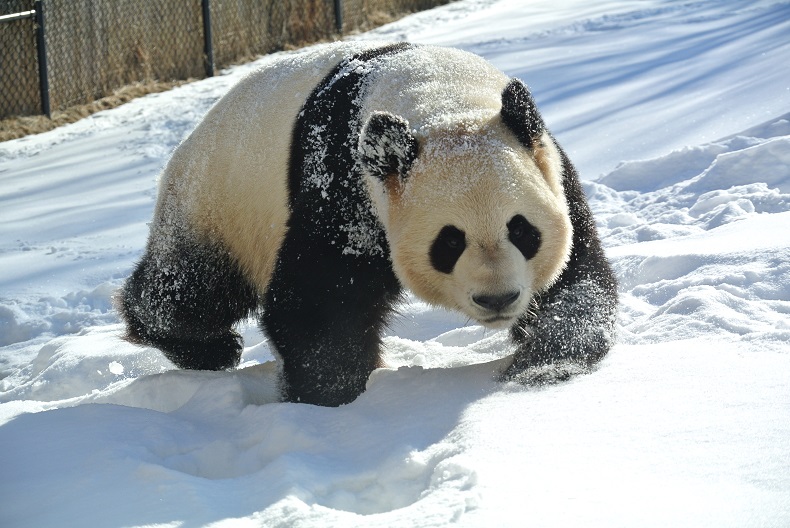Correction: This story has been updated to note that a Japanese Macaque is a monkey.

It’s hard out there for a penguin.
Well, at least it was on New Year’s Eve in Calgary, when the mercury dipped to a frigid -25 C (plus windchill) and the keepers at one of Canada’s largest zoos decided that it was just too cold for even the toughest of birds.
The penguins were hustled indoors, mainly — the keepers explained — to protect their young chicks. Already adapted to the rigours of winter, they lasted longer outside than most other animals at the zoo.
WATCH: Too cold for penguins at the Calgary Zoo

Major zoos and safari parks across the country seem to err on the side of caution when it comes to keeping their menageries sheltered from the elements throughout the calendar year, but Canada’s winters present a unique set of challenges.
For some animals like penguins, pandas, polar bears, bison, alpacas and the appropriately named snow leopard, Mother Nature’s icy grip is nothing they wouldn’t experience in the wild.
But others are accustomed to much warmer climates, and some have to be moved inside for the duration of the coldest months. That means adapting and sometimes expanding their summertime indoor shelters to become round-the-clock winter homes.
Karl Fournier, director of animal care at Quebec’s Granby Zoo, said about a third of his animals can venture outside in the cold regularly. The others, not so much.
“When we get to the fall, there are certain days that animals will go outside because the temperature permits it, other days they won’t be able to go outside,” he said, noting that the zoo has rules in place regarding how cold it can get before individual species must come in.
READ MORE: Alligators make do in frozen zoo enclosure in ‘amazing’ display of survival
Many facilities, including the Toronto Zoo, follow the Association of Zoos and Aquariums’ species-specific guidelines on temperature ranges for animals. Giant pandas, for example, will come inside at about -10 C.
But decisions are not based only on temperature, Fournier explained. Wind and precipitation also play a big role.
“Once we get to winter, all of our indoor spaces have been designed specifically according to the needs of each species … We want to give them the most space possible,” Fournier said.
For large primates, that means giving them plenty of floor space (preferably not cement) and some trunks and trees to scamper up and down. Smaller primates that spend more time aloft must be given lots of trees to climb.
For dominant members of each primate social group it’s important to have “visual barriers, have spaces where they can be away from the group to reduce tensions – like they would in nature,” Fournier noted.
Big cats like lions can often go outside, and actually, enjoy it in spite of their origins on the African savanna, but zoos usually provide them with heated areas or shelters where they can rest.
Monkeys like the Japanese macaque are given space to sit outdoors at the Granby Zoo with overhead heaters and even heated floors.
READ MORE: Disturbing zoo video reinforces calls for provincial regulations in Ontario
At the Toronto Zoo, wildlife care manager Eric Cole said about half of the animals get some outdoor time in winter.
The zoo uses similar techniques to help them stay comfortable.
“We do have heated caves, heated floors, heated pads, radiant heat for some of our less cold-tolerant animals that can go outside into yards or exhibits, and they do avail of these while still enjoying being outside,” Cole said in an email.
“All of our animals when indoors have heated pools (except penguins who do not require them). We turn up the heat in our barns as required and our pavilions are all climate-controlled.”
Animals like hippos, giraffes, kangaroos, wombats and savanna birds are all brought indoors for the whole winter, he noted. Indoor pens may need new substrate, bedding or “enrichment” features (food puzzles, etc) to help stave off animal boredom until spring.
Canada’s zoos are accustomed to the yearly cycle at this point, Cole pointed out, so there usually aren’t major surprises.
“We have carried our animals through more than 40 winters so it’s normal routine for us,” he said. “We are well prepared to deal with it every year.”
- Honda expected to announce Ontario EV battery plant, part of a $15B investment
- Trudeau says ‘good luck’ to Saskatchewan premier in carbon price spat
- Canadians more likely to eat food past best-before date. What are the risks?
- Hundreds mourn 16-year-old Halifax homicide victim: ‘The youth are feeling it’







Comments